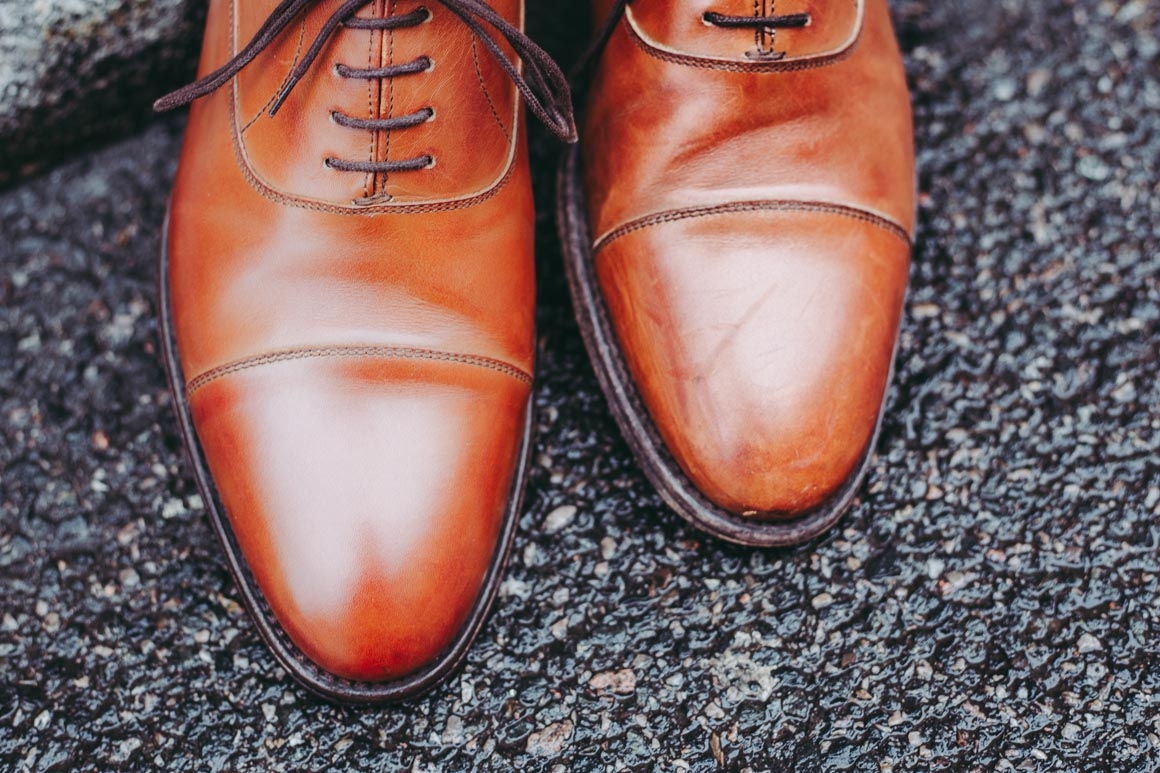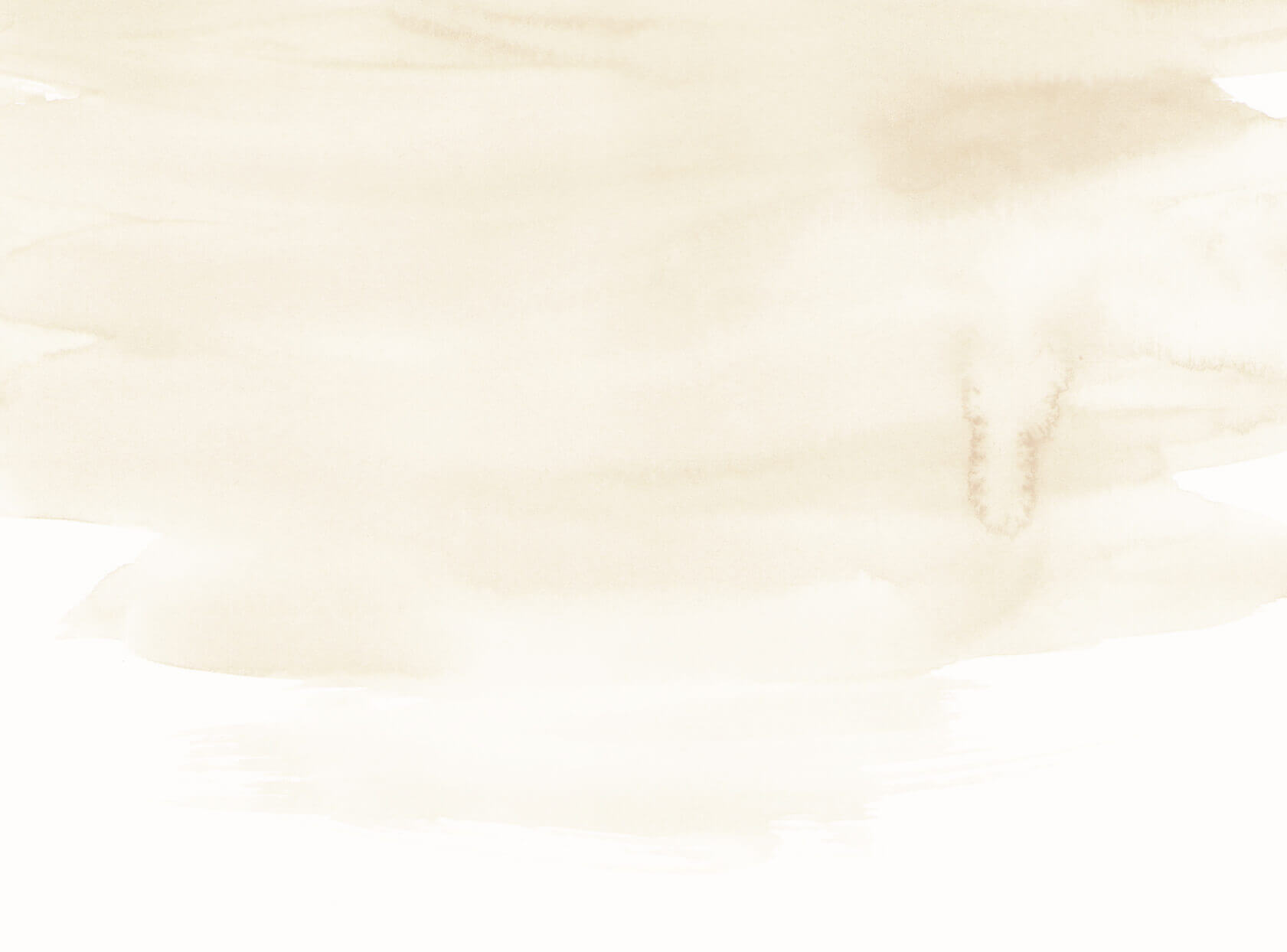How to take care of leather shoes in winter
15.11. 2019
Just about everybody enjoys a proper winter. Apart from admiring the calm beauty of winter nights and fighting it out in the snow there is also a significant downside to the whole affair. That downside would be the salt-infused slush that can wreak havoc on both the ice and your precious leather shoes. The easiest solution would be to lock them away in the shoe cabinet until it all blows over. However if you want to wear them all year round, rest assured that it is possible. We'll try to explain how to do it without damaging your shoes. At the end of this article you'll find a quick advice on how to save your shoes if damage has already been done.
Nourishment
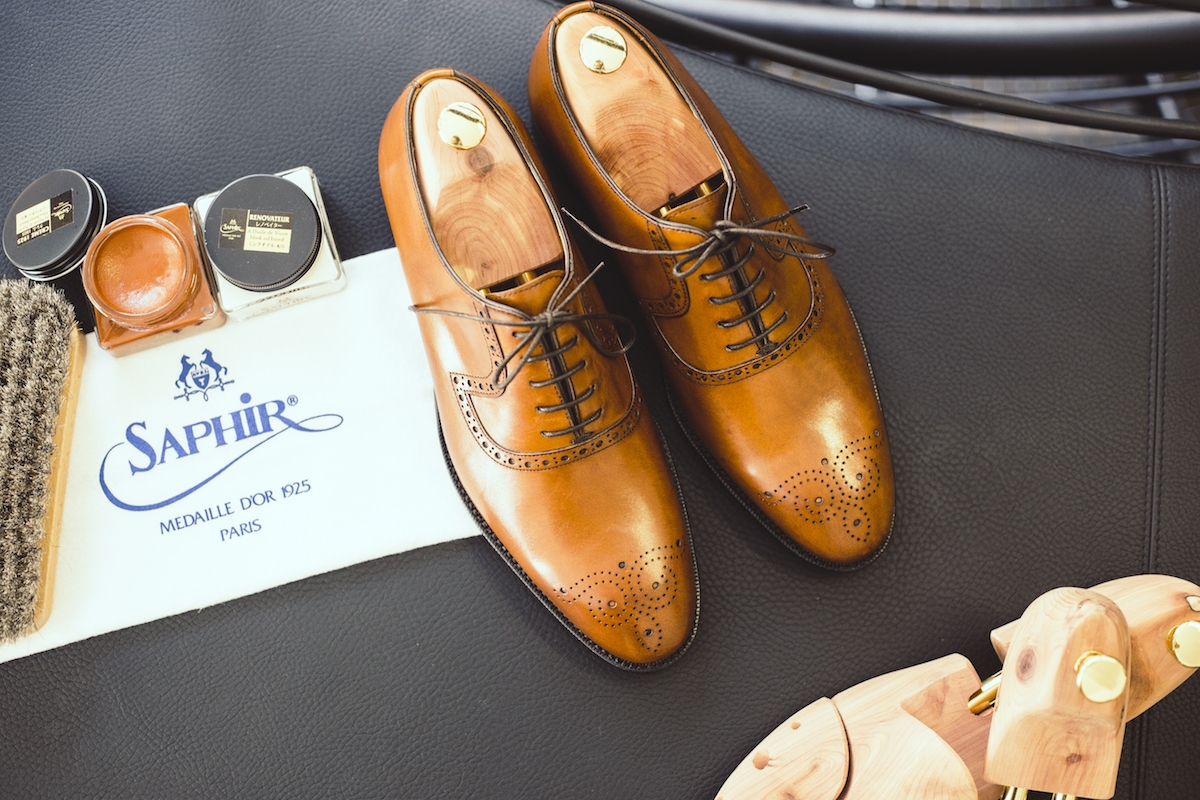
The most important foundation for keeping your shoes in superb condition is providing them with proper nourishment. You see, the leather of your shoes is not that different from your own skin. It also needs to be nourished. If it you fail to provide what it needs, it just won't look very good. There is one major difference though. While your own skin is capable of taking care of itself to some extent (some of us men who have never seen a skin cream in our lives would confirm that), leather of your shoes just won't be able to do that.
What you need is a proper conditioner. Preferably one that contains only natural oils and waxes. You're looking for something neutral in color that doesn't contain any silicone - that would only seal the leather off. But don't worry, we don't offer any of these.
On the contrary, we only offer some of the most premium leather conditioners out there. Saphir Renovateur is perfect all year round, but given the fact it's the winter we're talking about, you might want to bring out the heavy guns - either the Saphir Dubbin or Saphir Everest conditioners, because both of them are intended to be used in extreme weather.
An optional second layer might also include a cream polish, either with or without pigment, based on the overall condition of your shoes. When it comes to wax polish, our advice would be to steer clear from it during the winter time. Yes, it does indeed provide a mirror-like shine, but it also dries the leather out a little, which is something you want to avoid.
Tips for proper nourishment:
- Saphir Medaille d'Or Renovateur Oiled Leather Conditioner
- Saphir Dubbin Graisse Conditioner
- Saphir Everest Dubbin Conditioner
- Saphir Médaille d'Or Pommadier Shoe Cream Polish - neutral (or in the appropriate color)
- Saphir Chamois Cloth
Impregnation
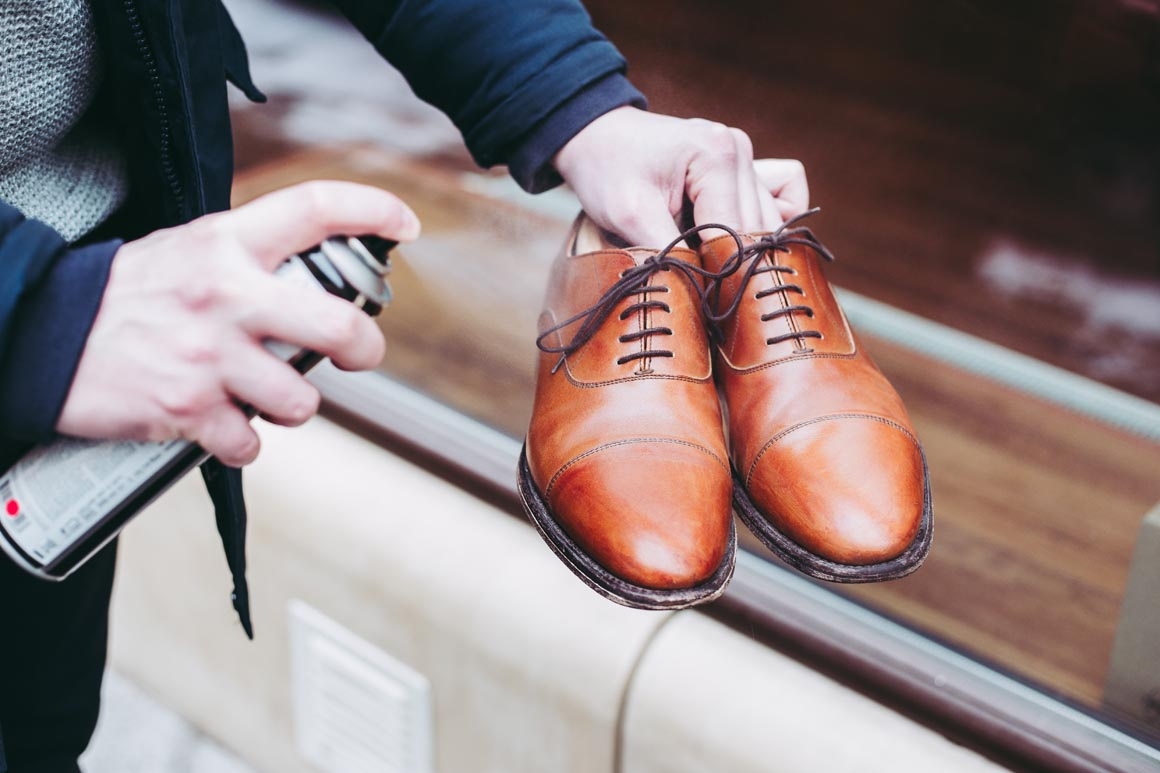
When water can't get to the leather, it also can't cause any damage, it is as simple as that. That's where water-repelling spray comes in handy. Just like it was the case with conditioners, you should aim for something silicone-free, the Saphir Super Invulner for instance would be a great choice.
Prevention is sometimes the best cure indeed. Do not forget to renew this protective layer every now and then - based on the weather, frequency of use and other factors you should aim to renew it every two or three weeks.
Impregnation tips:
Leather or rubber soles?
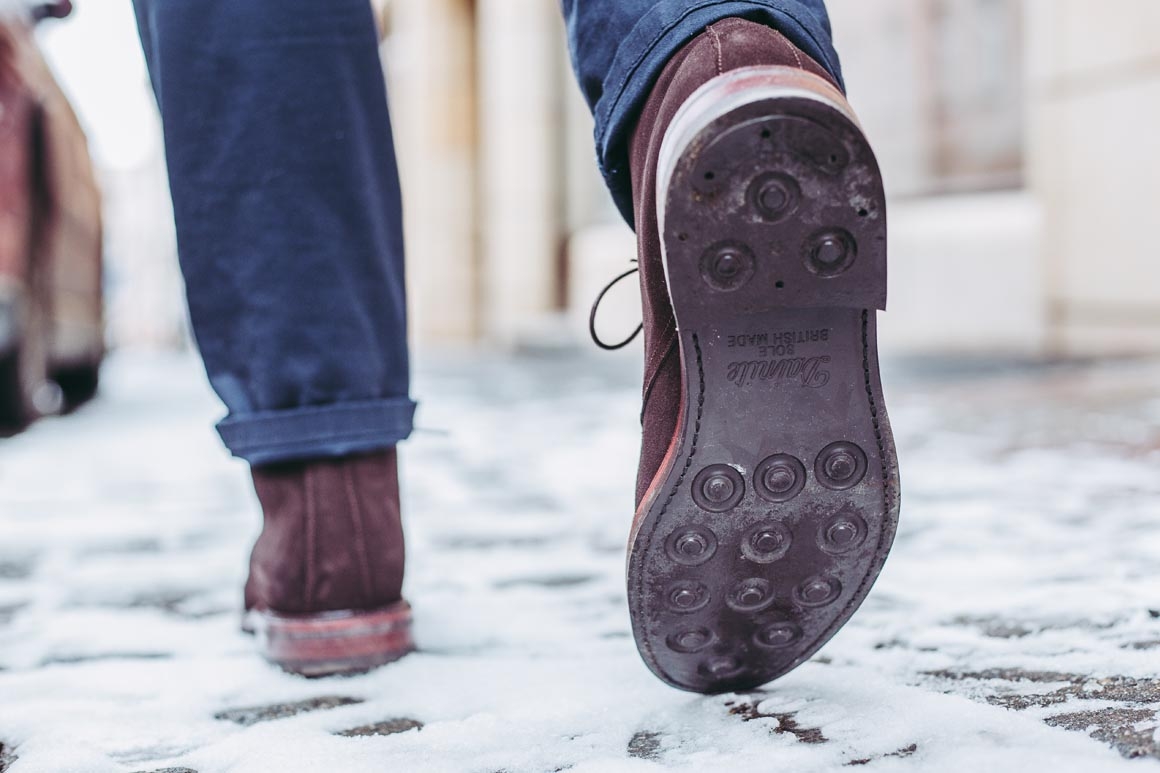
Leather soles are beautiful and elegant, no argument there. However using them during the winter when pavements tend to be slippery and icy requires a good deal of courage and some ballet moves at times. That is why rubber soles might be a better idea.
One of the most durable brand rubber soles is the British Dainite with its characteristic rubber dots. It will also make your strides much easier and confident.
However if you already own a pair of shoes with a leather sole, you might consider taking them to your local cobbler and having them fitted with a thin layer of rubber on the bottom of the original leather sole. Some of the more conservative shoemakers wouldn't like that idea and might argue that doing that might alter the balance of shoes. Isn't that still worth it considering all the trouble it would save you?
Another possible solution would be getting the rubber overshoes. You can simply put these on when going out into the wild and your shoes will be well protected against the elements. Just don't forget to take them off once you go back in, since they tend to look a bit funny.
Suede
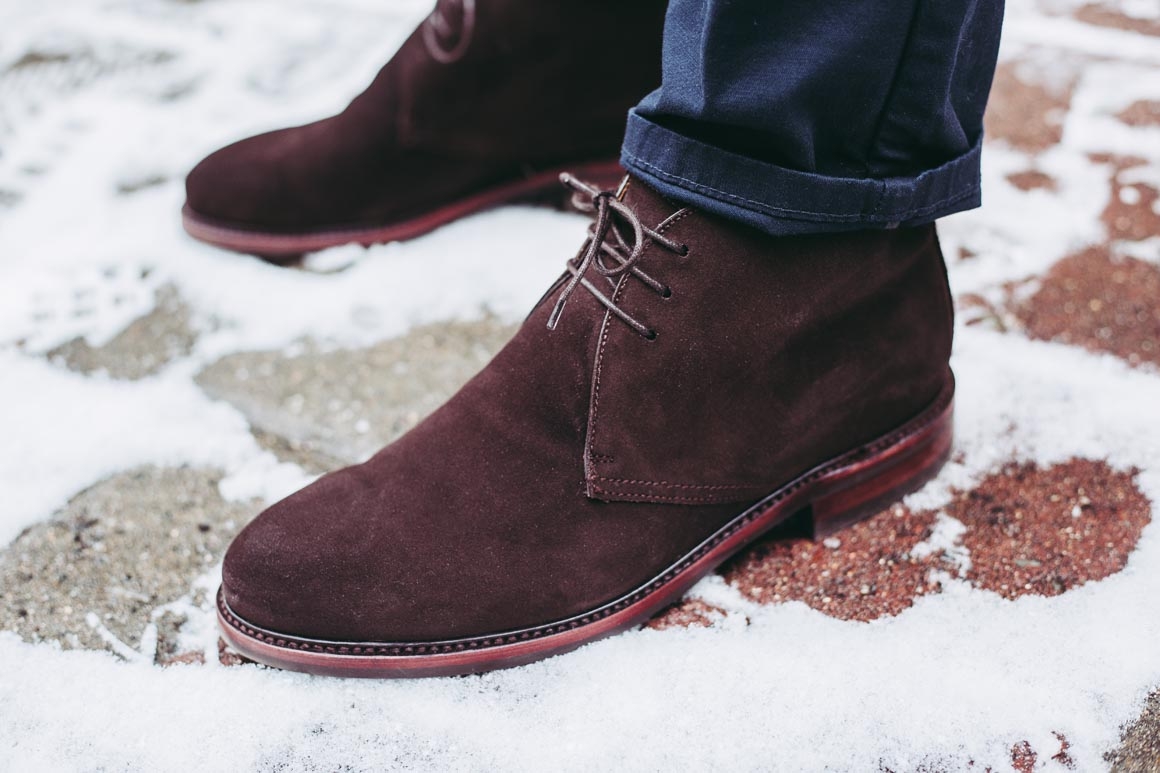
There's an old myth that suede and humid conditions just don't get along too well. We'd like to tackle that superstition once and for all. I for one have been wearing my suede chukka boots throughout six consecutive winters. I regularly use the Saphir Super Invulner, sometimes together with a suede conditioner. Not a single time have my shoes been either dirty beyond the point of no return nor soaking wet, nor are they damaged in any way. If by some chance they do get dirty, I just clean them with a weth cloth, brush them, let them dry for a while and then renew the protective layer. And that's it, it really is as simple as that.
Suede-leather care starting pack:
- Saphir Beauté du Cuir Suede & Nubuck Shoe Brush
- Saphir Medaille d'Or Renovateur Suede Leather Conditioner
When damage has already been done
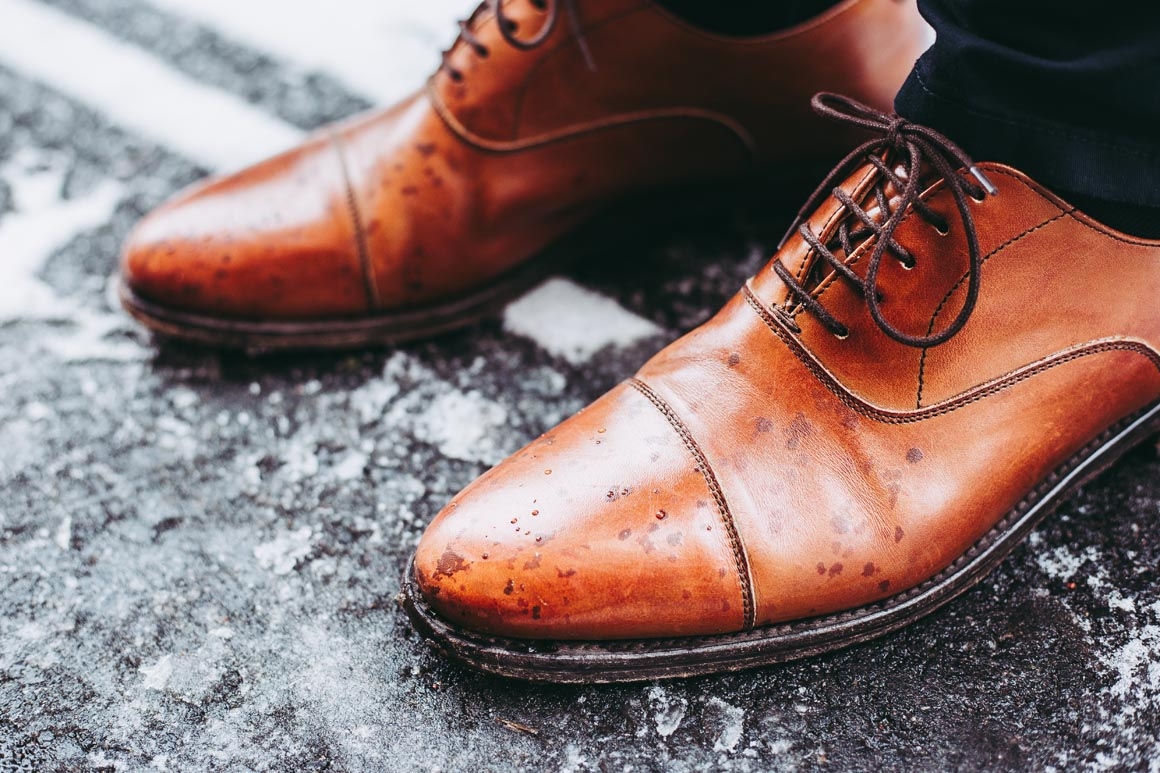
But there's always a chance that you're reading this article too late. Maybe, just maybe your shoes are already soaked with salt and snow. What is there to do then?
First of all you need to get right of the salt. Ideally brush the shoe gently and then wash it using the Saphir Hiver Winter. If you don't have it at hand, a solution consisting of one part vinegar and one part water might do as well. Afterwards let your shoes dry in room temparature and insert the shoe trees to smooth out the creases. Never ever should you put them under a radiator nor should you use a hairdryer. The leather of your shoes might dry too quickly and could crack as a result, which would probably also be the last time you'd ever think of putting them on. Once you're finished undoing the damage go back to the first point and apply a conditioner to make sure this doesn't happen again.
Tips for undoing the winter damage:
